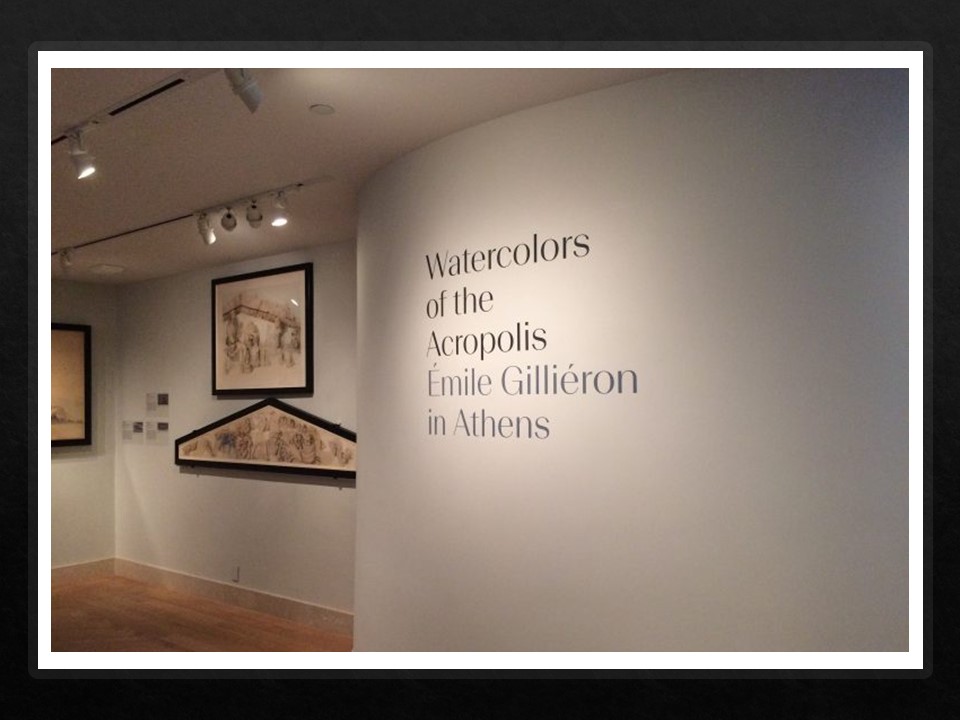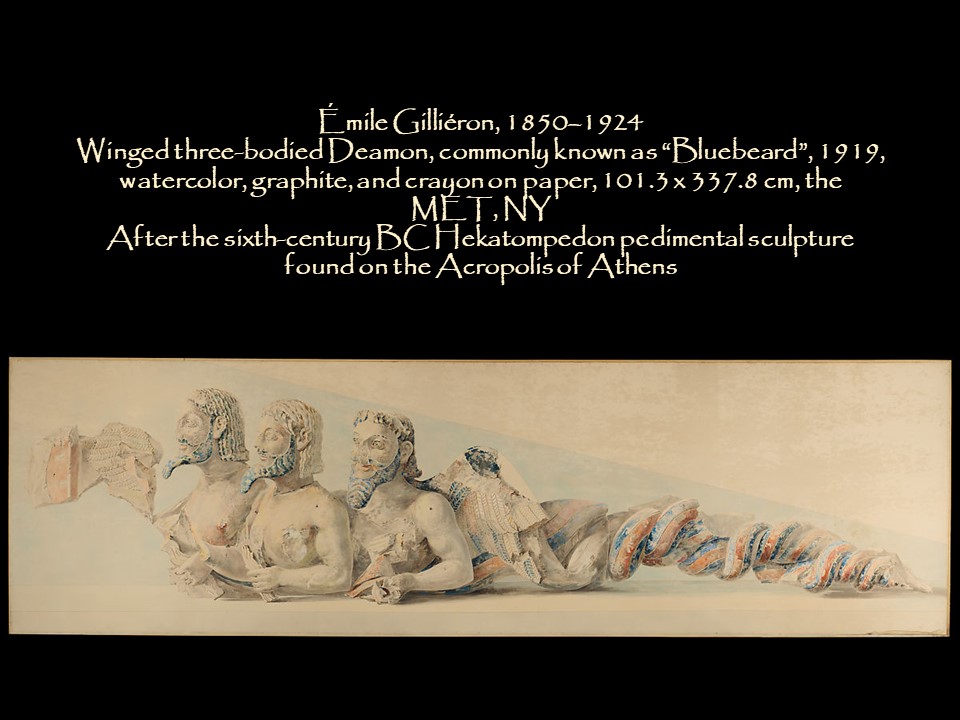
While in New York, and if you are an Ancient Greek Art aficionado, the Metropolitan Museum of Art Exhibition Watercolors of the Acropolis: Émile Gilliéron in Athens is a MUST!
Back in 2011, I saw the Historic Images of the Greek Bronze Age: The Reproductions of E. Gilliéron & Son Metropolitan Museum Exhibition, and today I am eager and hopeful, to see the new Exhibition on Gilliéron père work for the Acropolis Archaic sculptures. The Gilliérons are tightly connected with Greek Bronze Age Archaeology. They were astonishing artists, hired by Sir Arthur Evans, to reconstruct the fresco paintings in the palace at Knossos. Their copies of Minoan Frescoes are highly recognizable today, allowing the viewer to accurately observe the fragmentary parts of the original fresco along with their own creative proposal for the appearance of missing elements. The Gilliéron restored Minoan Frescoes, in watercolours or plaster, popularized and spread the study of Greek Bronze Age Art throughout Europe and America. https://www.metmuseum.org/press/exhibitions/2010/e-gilli%C3%A9ron–sons-reproductions-of-art-from-greek-bronze-age-on-view-at-metropolitan-museum
The current Metropolitan Museum Exhibition titled Watercolors of the Acropolis: Émile Gilliéron in Athens features five watercolours that depict architectural sculptures from Archaic Monuments discovered in the Acropolis of Athens.
Three of the largest watercolours depict the Hekatompedos Pediment. The central composition features two Lions tearing apart a Bull. On the left side, Herakles is depicted fighting a Triton and on the right, the Winged three-bodied Deamon, commonly known as “Bluebeard” with the symbols of the three elements of nature in his hands, fills the triangular space masterfully.

The third watercolour presents pedimental sculptures depicting the Introduction of Herakles into Olympos or as described in the Acropolis Museum of Athens, the Apotheosis (deification) of Hercules. This pedimental composition, made in an Attic workshop, belonged to an unidentified small temple. It shows an imposing seated Zeus, a frontally depicted Hera, Hercules dressed in his characteristic lion skin, Iris and Athena, the hero’s divine guardian. The entire composition, as Emile Gillieron shows us, was painted with bright colours, traces of which are still visible today.
The Hydra pediment is the last Emile Gillieronwatercolour in the MET Exhibition. Once more, the watercolour accurately shows pedimental sculptures of great aesthetic value, very descriptive and brightly painted. The Hydra Pediment comes from an unidentified small building on the Athenian Acropolis.
According to the MET, “In the days before color photography, hand-colored drawings and photographs were the principal means of documenting polychrome Greek art.” But “Reproductions and copies fell out of fashion, and Gilliéron’s work… retired to The Met’s basement… and remained in storage until 2015.” Today and after “the conservators’ heroic efforts to rehabilitate these forgotten pieces” we can once more admire the power with which these amazing watercolours “provide a fascinating insight into the sculptures found at the Acropolis as they appeared when they were first unearthed around the turn of the century.”
For a PowerPoint inspired by the Exhibition, please… click HERE!
Bibliography on the Exhibition: https://www.metmuseum.org/exhibitions/listings/2019/watercolors-of-the-acropolis-emile-gillieron and https://www.metmuseum.org/press/exhibitions/2019/emile-gillieron and https://store.metmuseum.org/watercolors-of-the-acropolis-emile-gillieron-in-athens-80046986?mma_source=mainmuseum&mma_medium=metmuseum.org&mma_campaign=watercolors-of-the-acropolis&mma_term=082619&mma_content=watercolors-of-the-acropolis-80046986 and https://www.metmuseum.org/art/collection/search#!?q=Emile%20Gilli%C3%A9ron&perPage=20&sortBy=Relevance&offset=0&pageSize=0